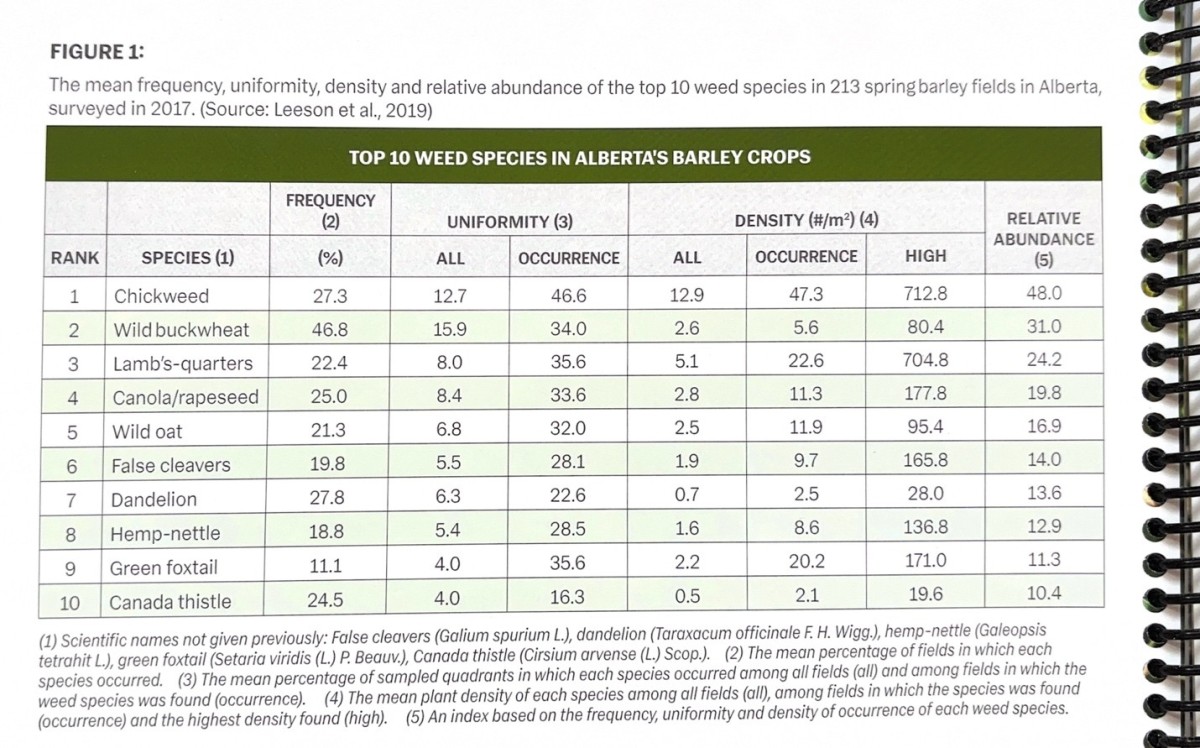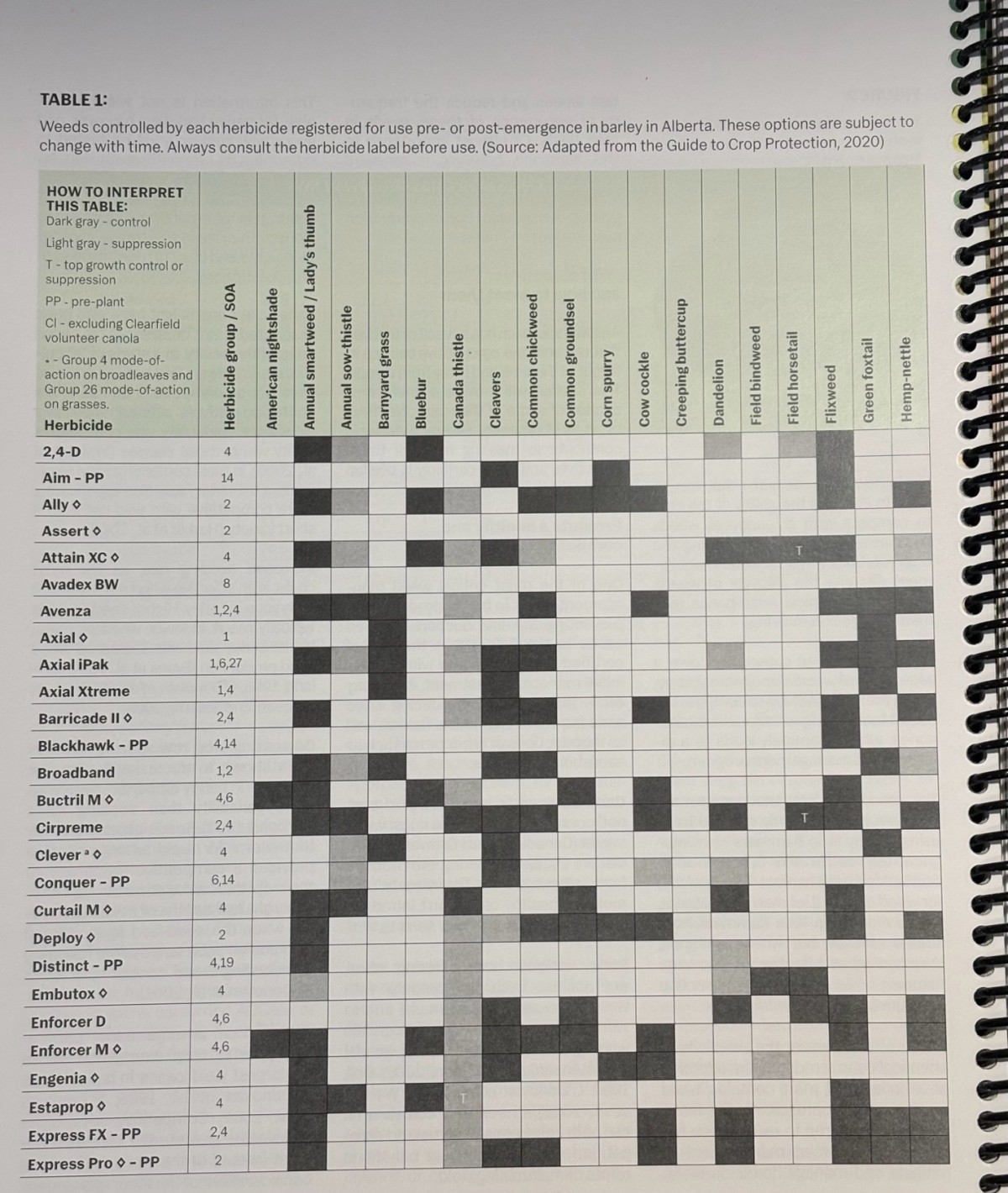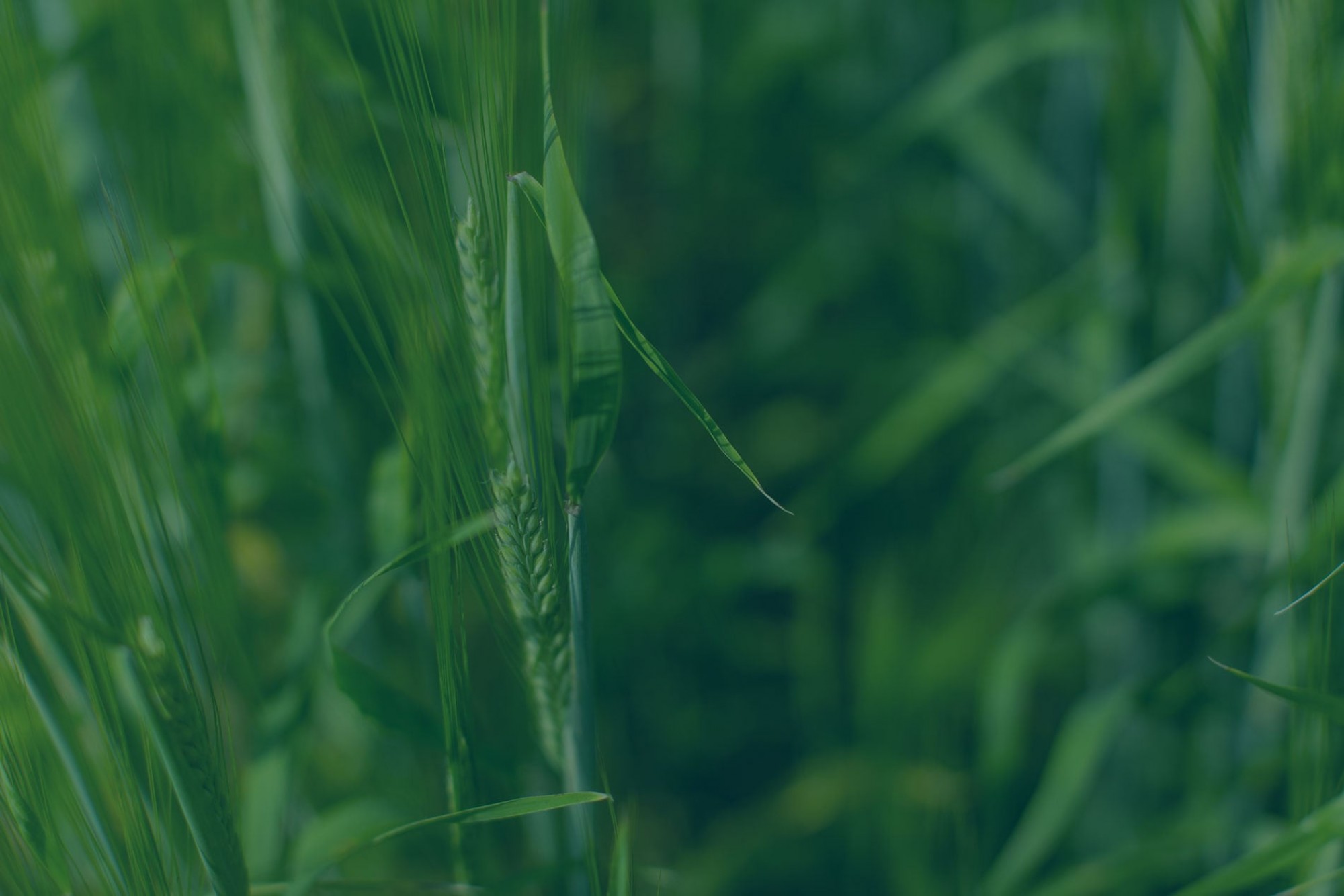Barley Production Manual – Integrated Weed Management
This article is based on Chapter 15: Integrated Weed Management of the Alberta Grains Spring Barley Production Manual.
This article is the first in the series “Snapshots of the Production Manuals”, which shares key information from the production manual that helps you make agronomic decisions. We will kick-start with managing weeds in barley, based on the newly available Barley Production Manual by Alberta Grains.
Barley is one of the most competitive crop options for farmers in Western Canada. Compared to canola and peas, they experience less frequent and less severe yield losses due to weeds. That being said, it is important to be on the lookout for problematic weeds and make management plans based on the weed species present.

Figure 1. Top 10 weed species in spring barley production. Source: Page 120 of Spring Barley Production Manual.
So, if the above problematic weeds are present in a barley field, how to manage them? The production manual offers some tools and considerations.
Herbicide selection charts
The Barley Production Manual has barley-specific herbicide selector chart. The chart is adopted from the Crop Protection Guide (The Alberta Bluebook) and serves as a handy tool to select herbicide products.

Figure 2. Herbicide selection chart for barley. From Page 122 of the Barley Production Manual.
Integrated weed management tools
Integrated approaches can shift the competitive balance in favour of the crop and away from the weeds. Here are some tools shared by the Barley Production Manual:
Promote a healthy and competitive crop
- Use certified seeds to reduce weed introduction into the field.
- Choose a variety that can both compete and withstand competition. For example, a tall variety is more competitive with wild oats than a short variety.
- Increase seeding rates and/or reduce row spacing.
Reduce weed seed bank inputs – Harvest weed seed control (HWSC)
- This method focuses on destroying weed seeds or restricting them in a small area. It works well for weeds that retain their seeds after maturity, such as wild buckwheat or volunteer canola.
- For weeds like wild oat that shatter seeds, cutting the barley for silage is a very effective way to manage weed seeds. Based on a 2013 study by Dr. Neil Harker, silaging barley early with no herbicide applied can reduce wild oat populations as low as or lower than barley grown for grain with a full herbicide regime.
Embrace diversity and agro-ecosystem services
- Weed seed predators, such as crickets, mice, ants, earthworms, slugs and beetles can consume large amount of weed seed. Practicing no-till or reduced tillage help conserve weed seed predators and aid in managing weed seedbank in soil.
Herbicide stewardship
- Herbicide diversity can help reduce the selection pressure for herbicide resistance. A few strategies, including herbicide mixing, rotation and layering, are the common tools to diversify herbicide use.
- Herbicide mixing uses more than one herbicide mode of action on the target weed simultaneously. This means for each target weed species, there is more than one mode of action.
- Herbicide rotation refers to the use of more than one herbicide site of action on the target weed species over multiple successive years. In other words, alternating herbicide MOA between years.
- Herbicide layering refers to the use of multiple herbicide mode of action on the target weeds at different time points within the same growing season. For example, use different herbicide MOA at pre-plant, in-crop and pre-harvest herbicide targeting the same weed species.
Combining IWM tools
Implementing biological, cultural or physical weed management tools with herbicides can improve weed control efficacy. Different IWM tools, when combined, can have an additive or synergistic effect. For example:
- Integrating narrow row spacing and high crop seeding rates with appropriately chosen herbicides throughout crop rotations can successfully manage Group 9 and Group 2 resistant kochia.
Besides being effective in managing weeds, IWM can be effective to reducing selection pressure for herbicide resistant weeds, while also achieving high yields and net economic returns.
For more comprehensive information on integrated weed management, or overall barley production, come to one of the events featuring Alberta Grains to pick up a copy for FREE.
- Plot2Farm Field Day: June 24, 2025 | Strathmore, AB
- Alberta Crop Diagnostics Days
- July 22 – Western Crop Innovations | Lacombe, AB
- July 23 – Lakeland College | Vermilion, AB
- August 6 – SARDA Ag Research | Donnelly, AB
Contact Ruoxi Xia (rxia@albertagrains.com) about getting a copy of the Spring Barley Production Manual and the Spring Wheat Production Manual.

